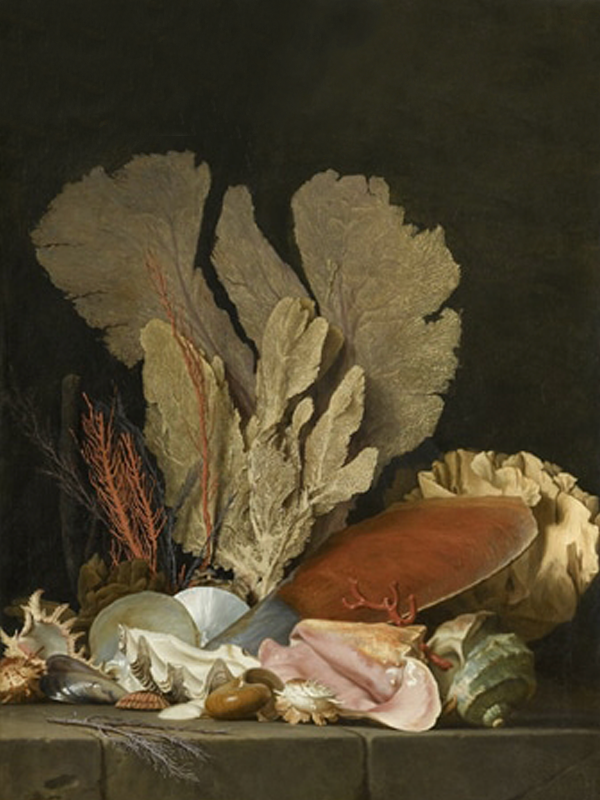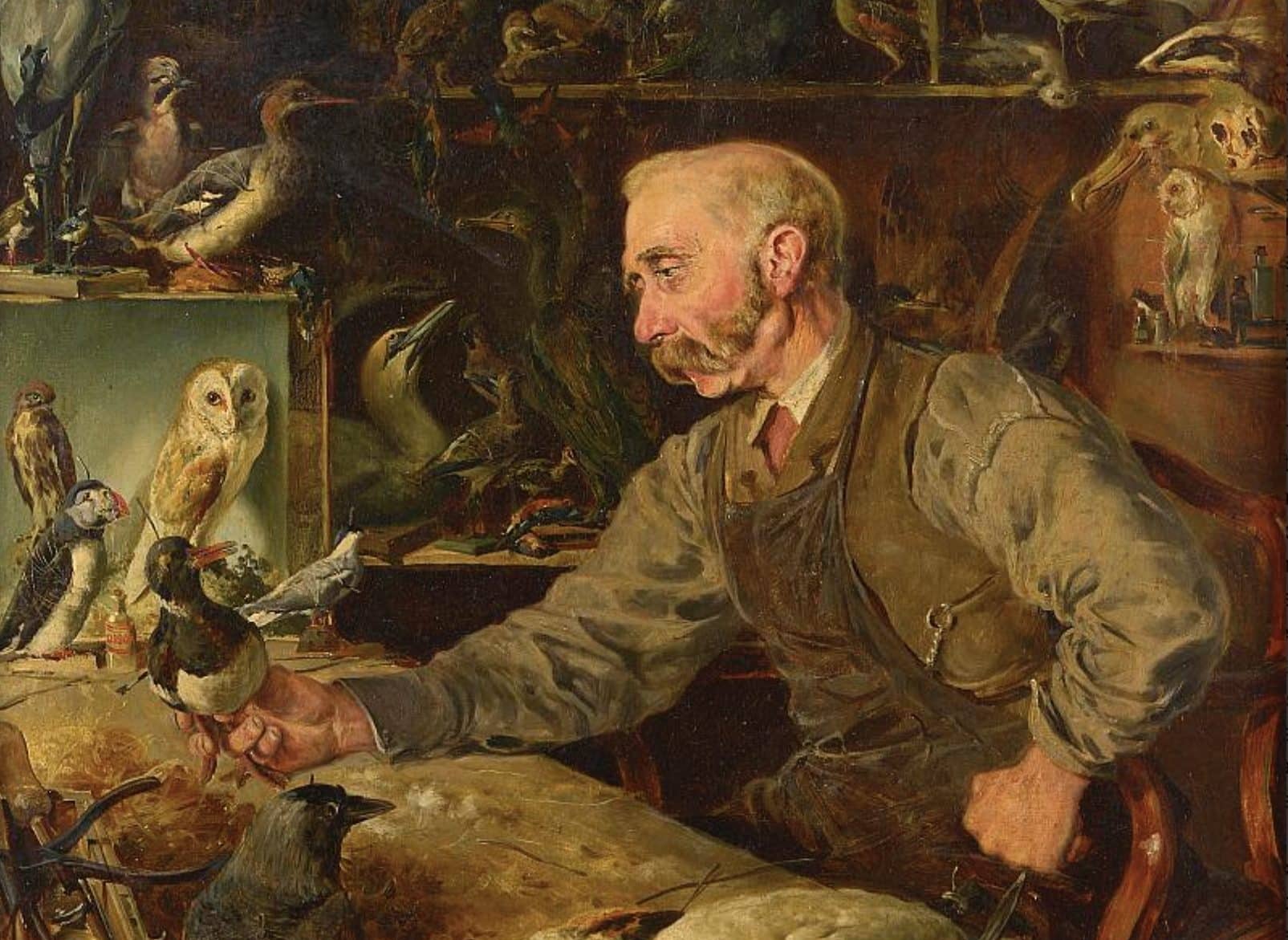
Taxidermists
Taxidermists

Like the hunters who were their main clients, taxidermists, at least in France and in Europe (it is not the same in the United States and Canada), are finding it increasingly difficult to make a living from their profession or rather their art.

The taxidermied birds are maintained during their drying by wires and strings.
Taxidermists today prefer to be called naturalists.
Faced with the disaffection and even hostility of which hunting is a victim in Europe in general and in France in particular, the taxidermists who are still working at the beginning of the 21st century are more and more naturalists, and in front of the fashion of the cabinets of curiosities, they specialize in the collections of shells, insects (butterflies, beetles and others) and for some of them in the taxidermy of fish.
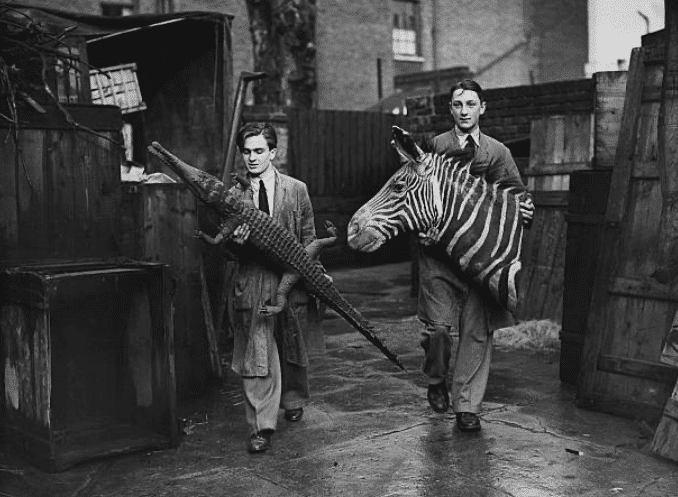
Reptiles and mammals (here a crocodile and a zebra in a cape) were "must-haves" of English taxidermy.
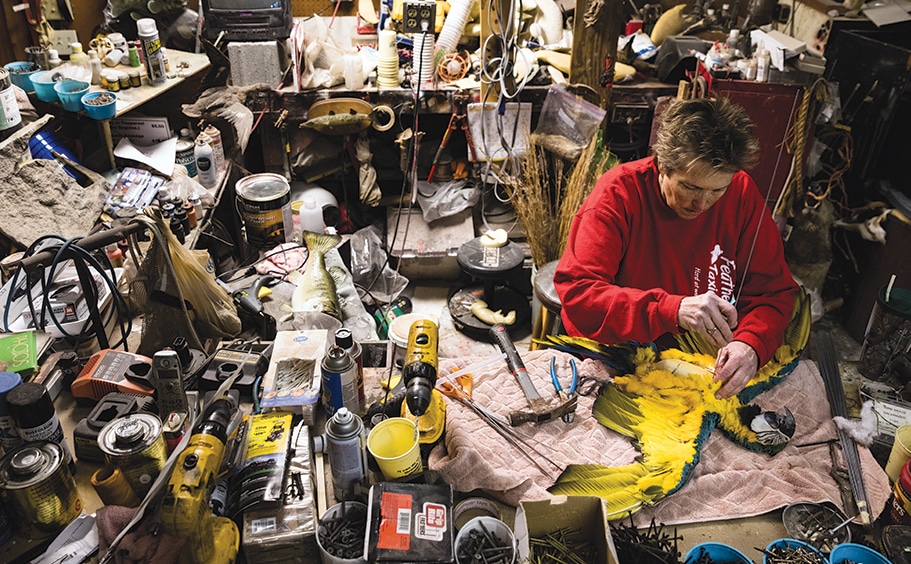
According to the trade association, while there were a little more than 1000 workshops in France twenty years ago, there are only about a third left today, that is to say between 300 and 350 independent craftsmen. Only 3 or 4 companies have employees. Whether employed or independent, taxidermists work for educational, scientific or artistic purposes.

Before being presented in dioramas, these birds are carefully tied up while drying so that their feathers do not ruffle.
A work of passion requiring talents of draughtsman and sculptor.
This highly specialized profession, which is primarily aimed at enthusiasts and offers few outlets (especially since the law on the preservation of species) requires recognized technical skills. Apart from bird, butterfly and shell collectors, their clientele of hunters, which was still their main source of income a quarter of a century ago, has unfortunately not been replaced by fishermen, as is the case in England and the United States. Only the Natural History museums, or the Hunting Museum in Paris (rue des Archives) still hire young talents, more to maintain or restore the existing and often old collections, than to create.
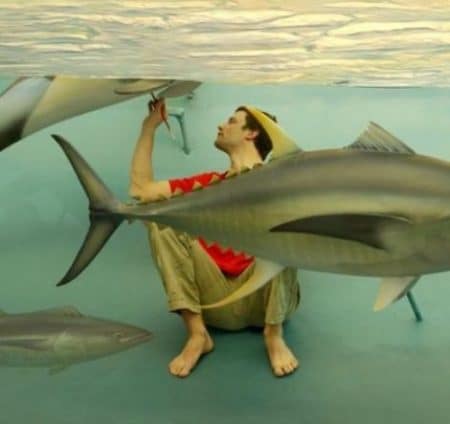
Modern taxidermy uses fiberglass casts that are then painted.
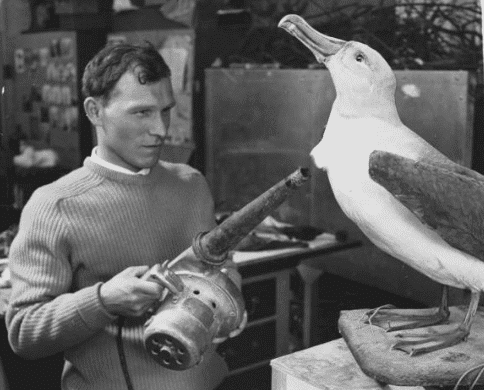
This albatross is blown in the feathers.
Taxidermy is a job for passionate people who need to know the techniques of skinning, tanning of skins, mounting of animals in realistic positions, and therefore talents of draftsman, sculptor and observer. The taxidermist must know many species, both indigenous and exotic, their way of life, their food… He must know where to find books or documents concerning rare or endangered species.
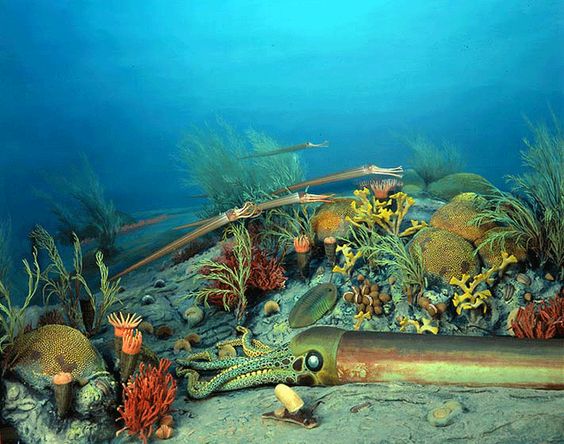
This very realistic diorama takes us back to at least 200 million years ago in the seas of the secondary era.
Today, the profession is being lost due to administrative hassles.
Moreover, taxidermy professionals are more and more confronted with “raids” by biodiversity agents, who come to check if there are no protected species in their freezers. No longer will a single taxidermist agree to naturalize a small diurnal or nocturnal bird of prey picked up dead on the road after having hit a vehicle. While intensive agriculture and the use of pesticides, or rather as it should be called “phytosanitary” are responsible for nine-tenths of the disappearance of birds and small mammals in our regions, if an agent of the Ministry of the Environment discovers a “naturalized” bird or a protected mustelid (weasel family) in a taxidermist’s shop, his shop will be closed.
At the international level, the Washington Convention regulates the trade in endangered species, including naturalized skins, skulls, teeth, claws, or any other by-product. In addition to a considerable traffic in live animals, there is also a significant traffic in naturalized animals or skins fraudulently exported for taxidermy purposes (tigers, lions, leopards, polar bears and other exotic species).
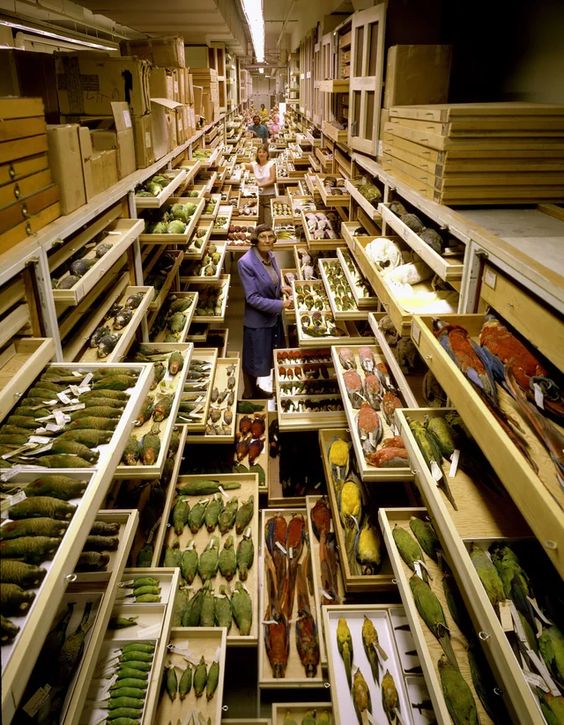
In the reserves of the museum, birds "in skin" are preserved for their later determination.

Consequently, all professional taxidermists, registered in the trade register, must be aware of the international and intra-community regulations on the circulation of species protected by the Washington Convention, which defines four appendices (A, B, C and D), as opposed to three for the Washington Convention (I, II and III). In addition to the customs formalities, the species listed in Appendix A, including when they are naturalized, must receive an Intra-Community Certificate (ICC), issued by the country’s management authority (the DIREN in France) at the request of the animal’s keeper. This certificate must accompany any naturalized specimen, especially when it is moved.
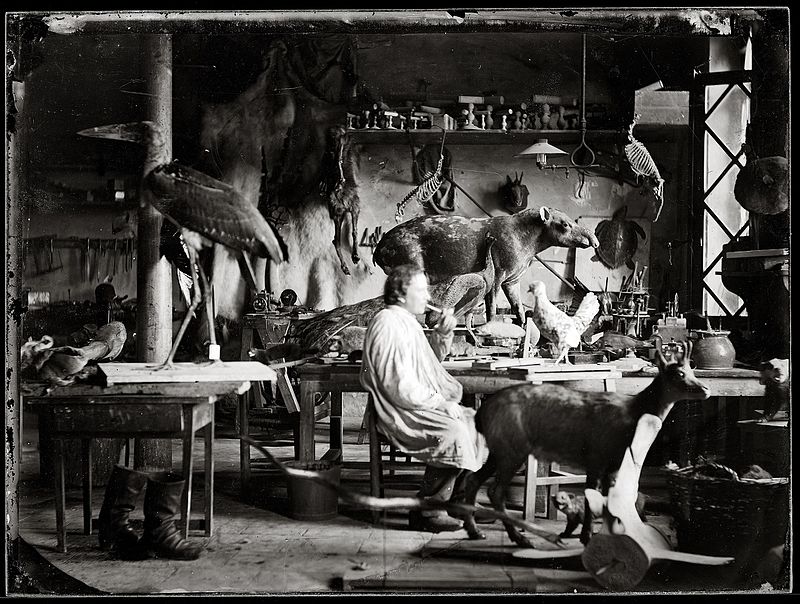
Between a tapir, a marabou, and a chamois, this taxidermist thinks about the look he will give to this domestic chicken.
Butterflies and seashells keep the business alive.

Finally, in France, the naturalization of a specimen belonging to a protected species of wildlife, as well as its exhibition to the public and its displacement, must be subject to a prefectoral authorization (decree of November 26, 2013) as confirmed by a recent response from the Ministry of Ecology, Sustainable Development and Energy. Faced with all these administrative hassles, it is understandable that the profession of taxidermist is no longer in demand.
Only the collections of butterflies, beetles and other insects, as well as shells, collections which are not really taxidermy in the strict sense of the word, since these invertebrate animals do not have a skin, are now fashionable in our country and allow taxidermists-naturalists to continue to make a living from their profession. Finally, let us underline it, the taxidermy or sometimes the molding (in resin or fiberglass) of record or trophy fishes (pikes, trouts, salmons, and marine carnivorous fishes…) comes back in fashion in decoration or in the cabinets of curiosities and allows some specialized craftsmen to continue to exert their trade-passion.
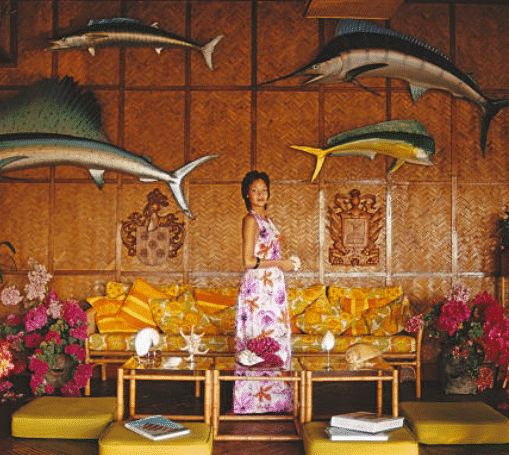
In this typical California interior, fiberglass fish hang on the wall.



